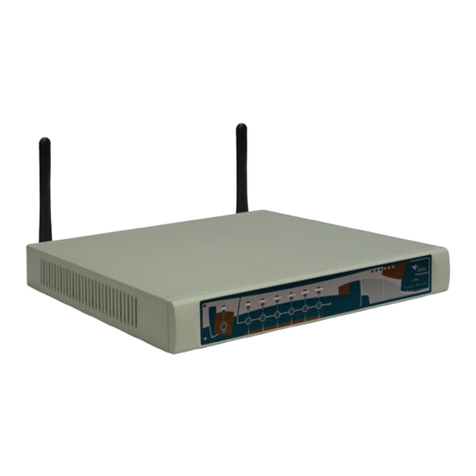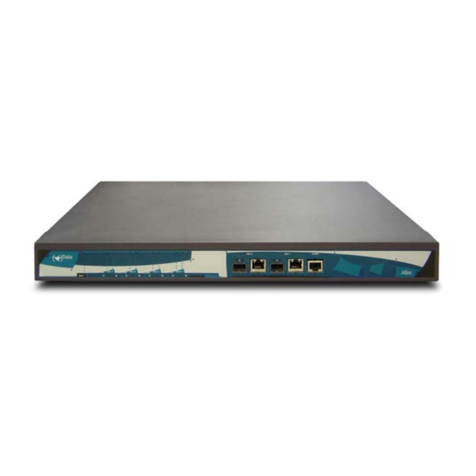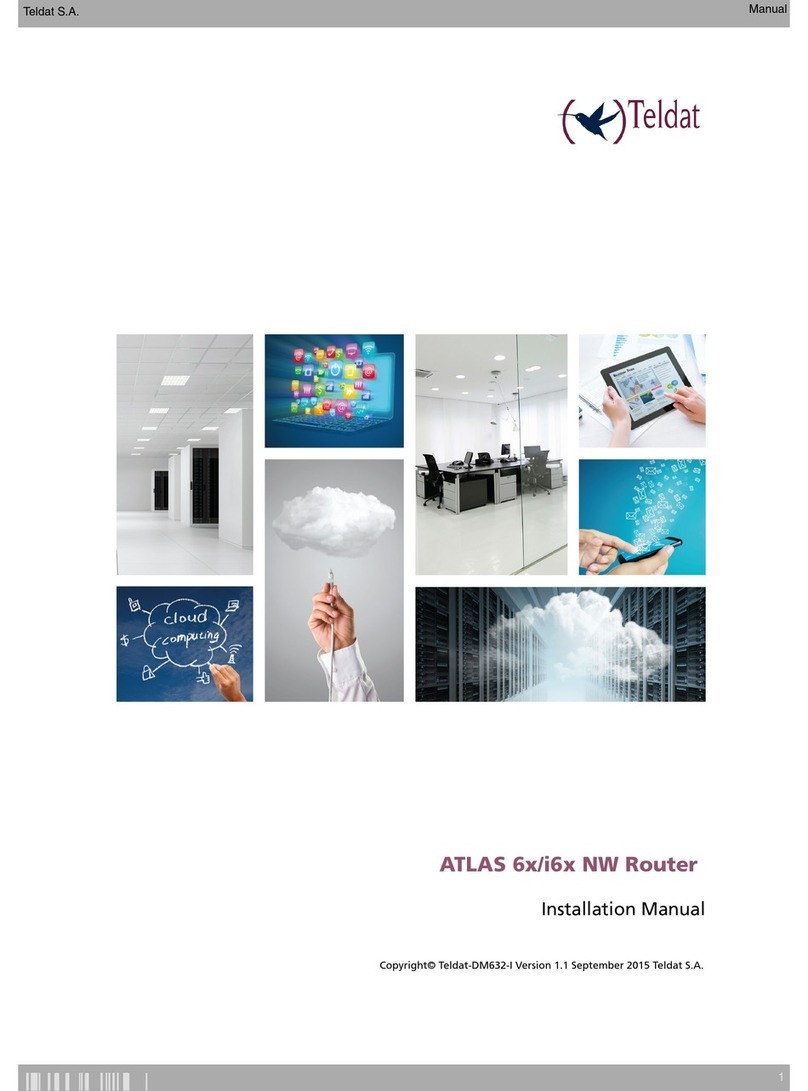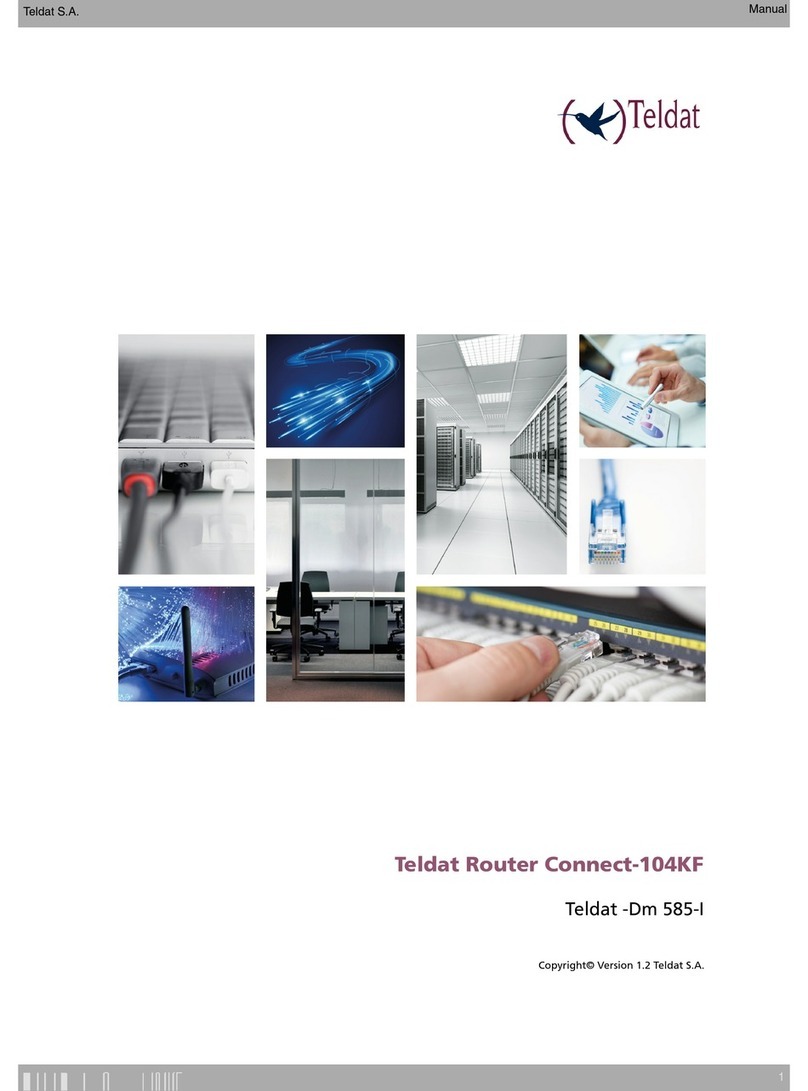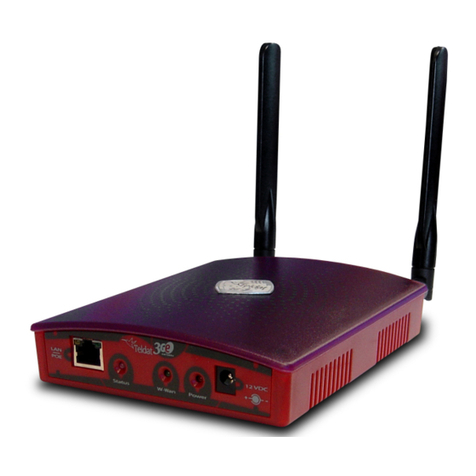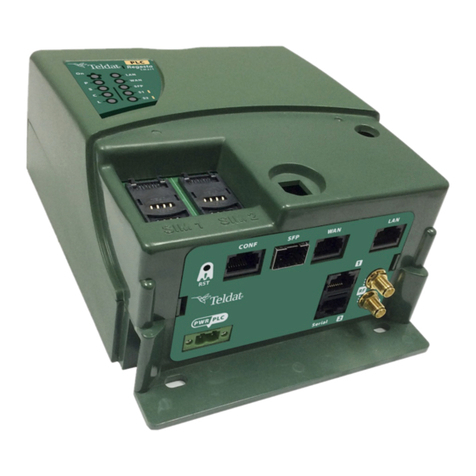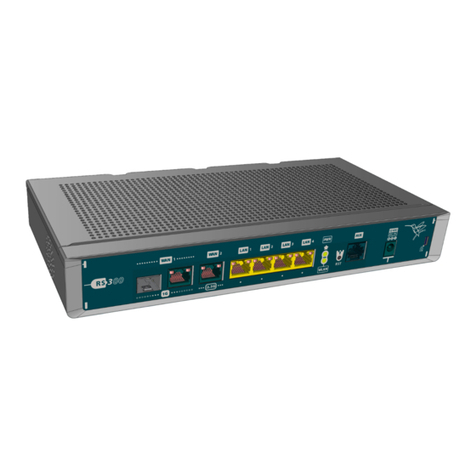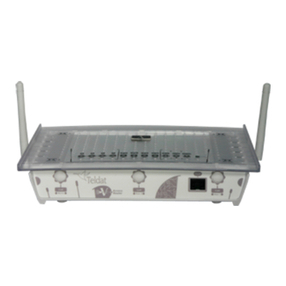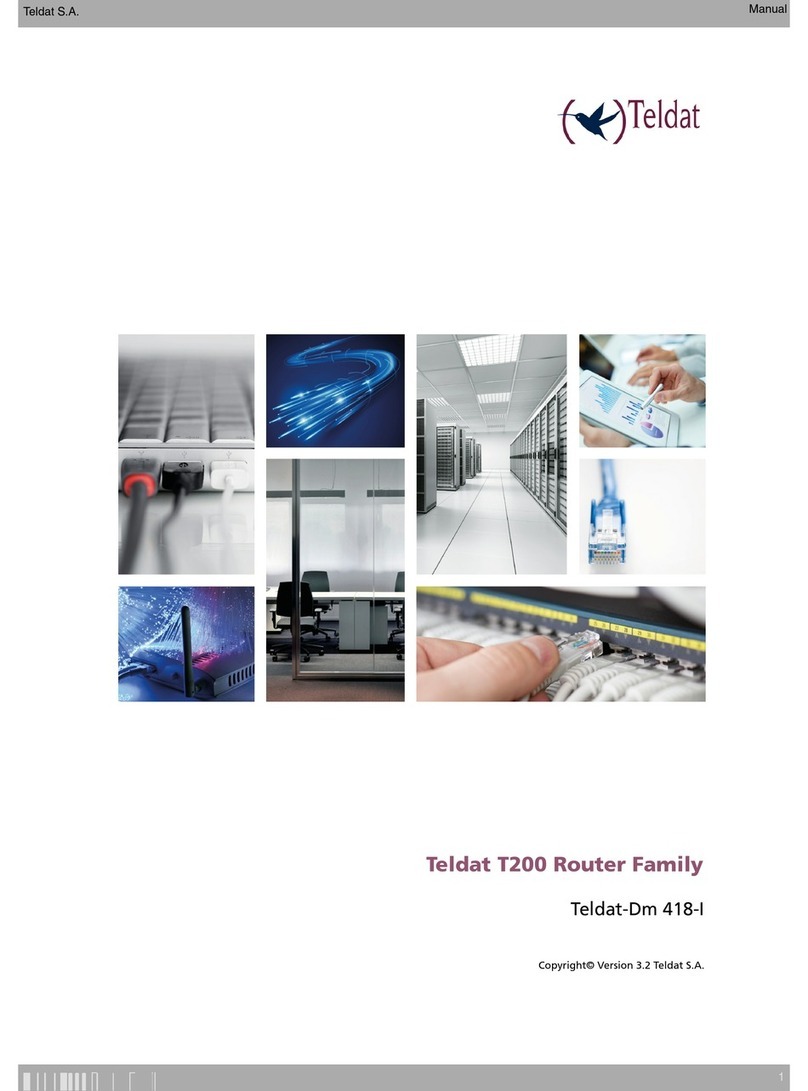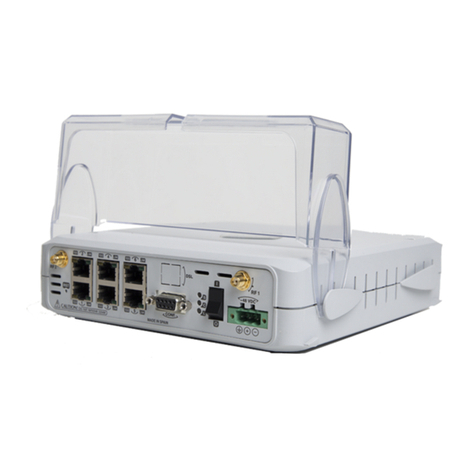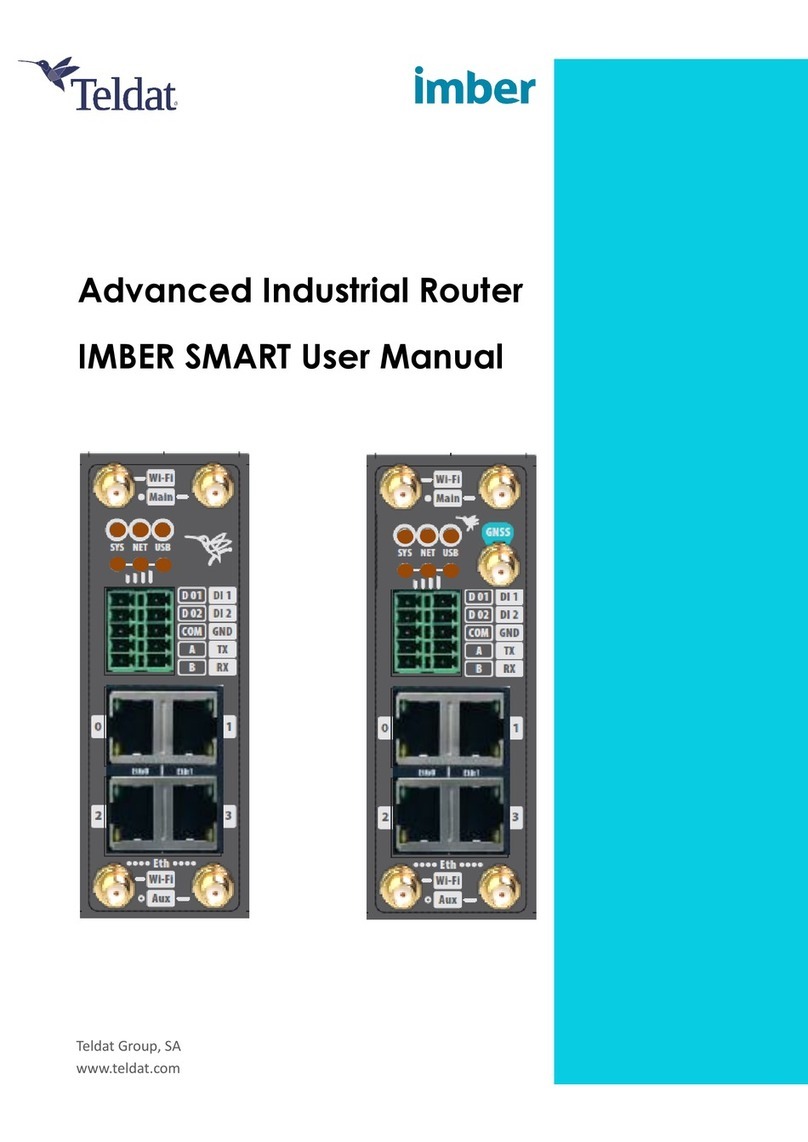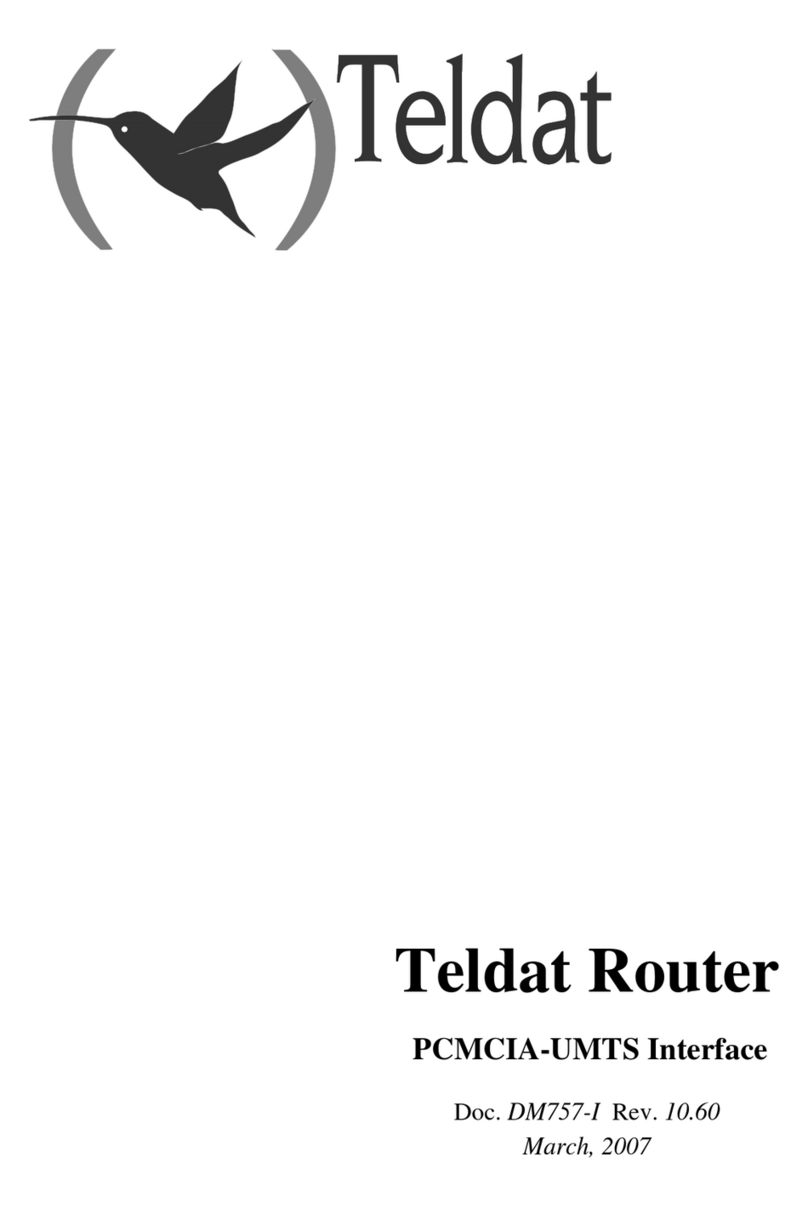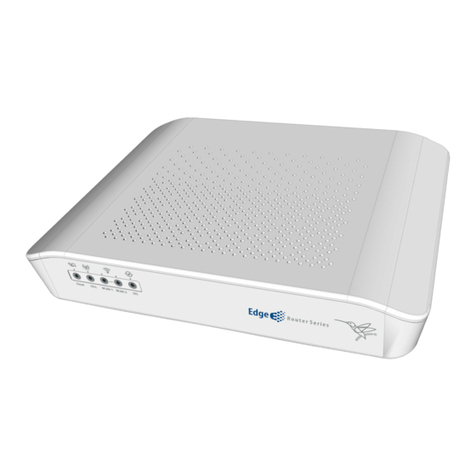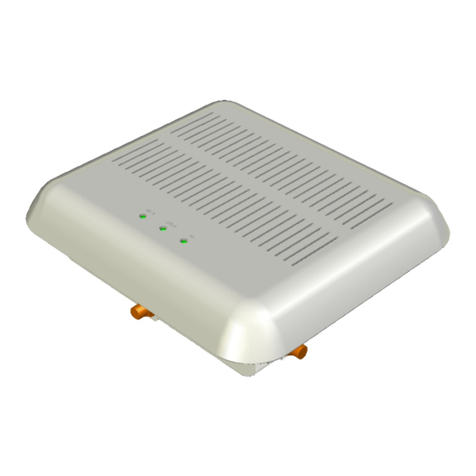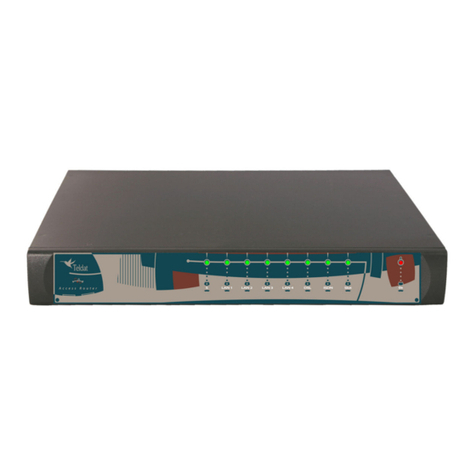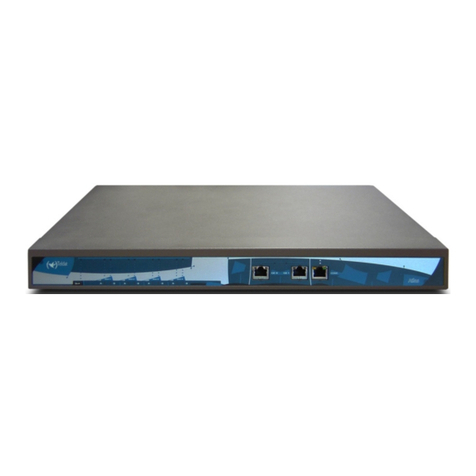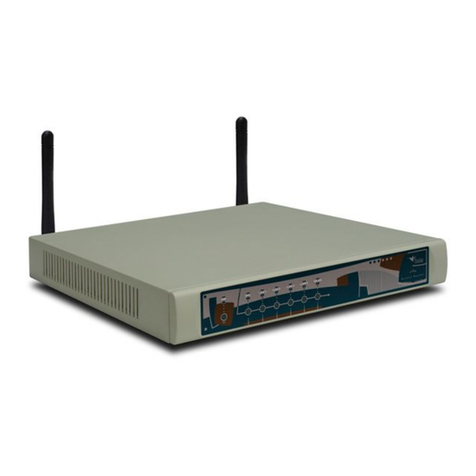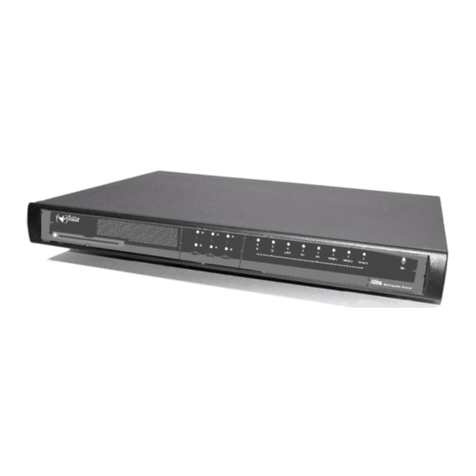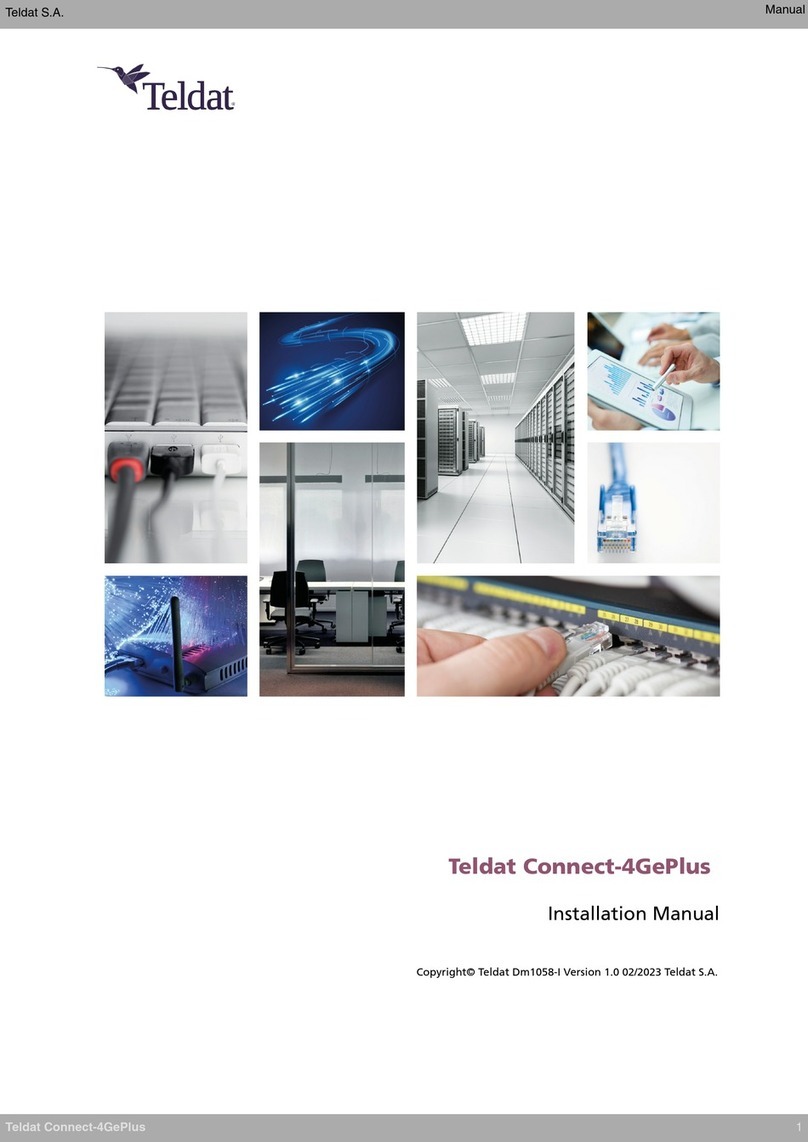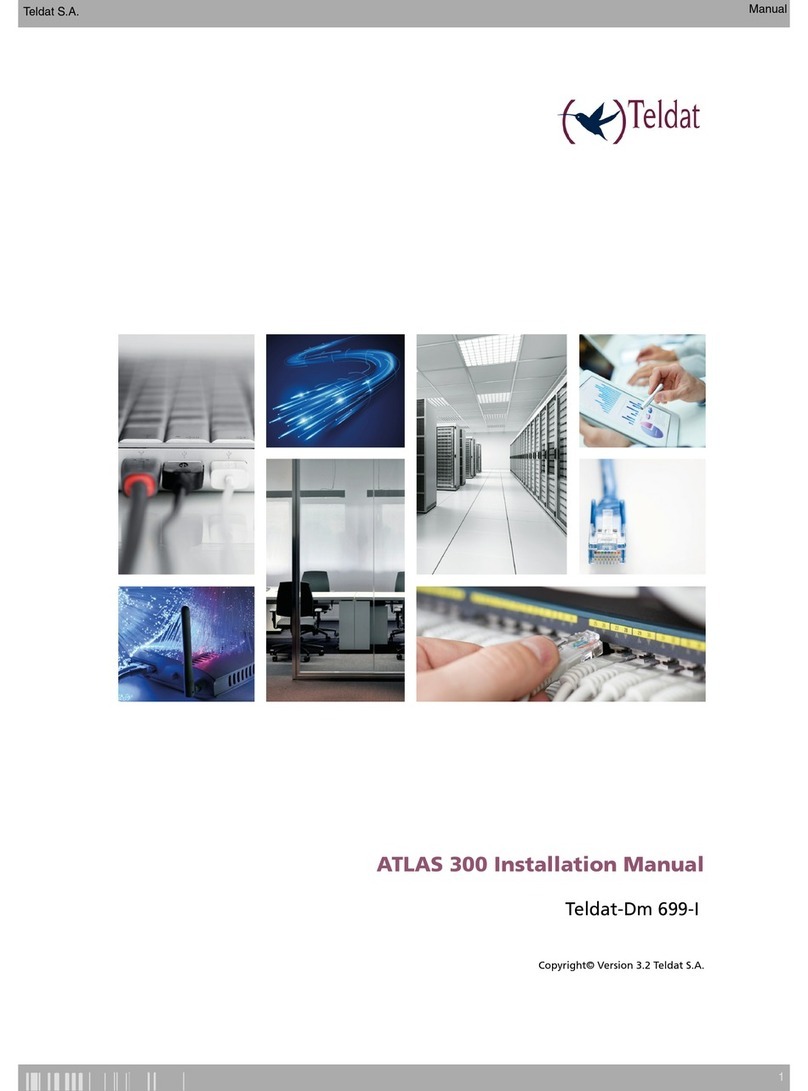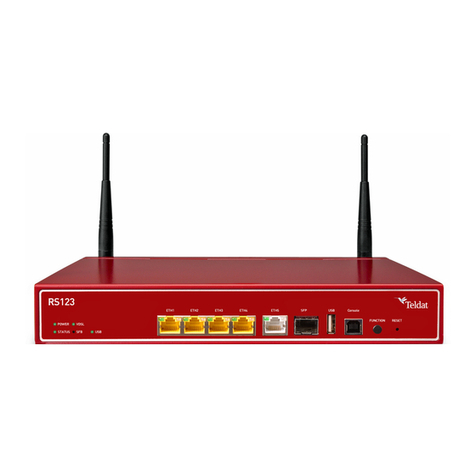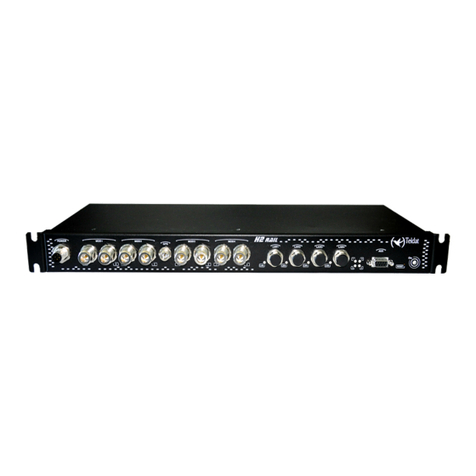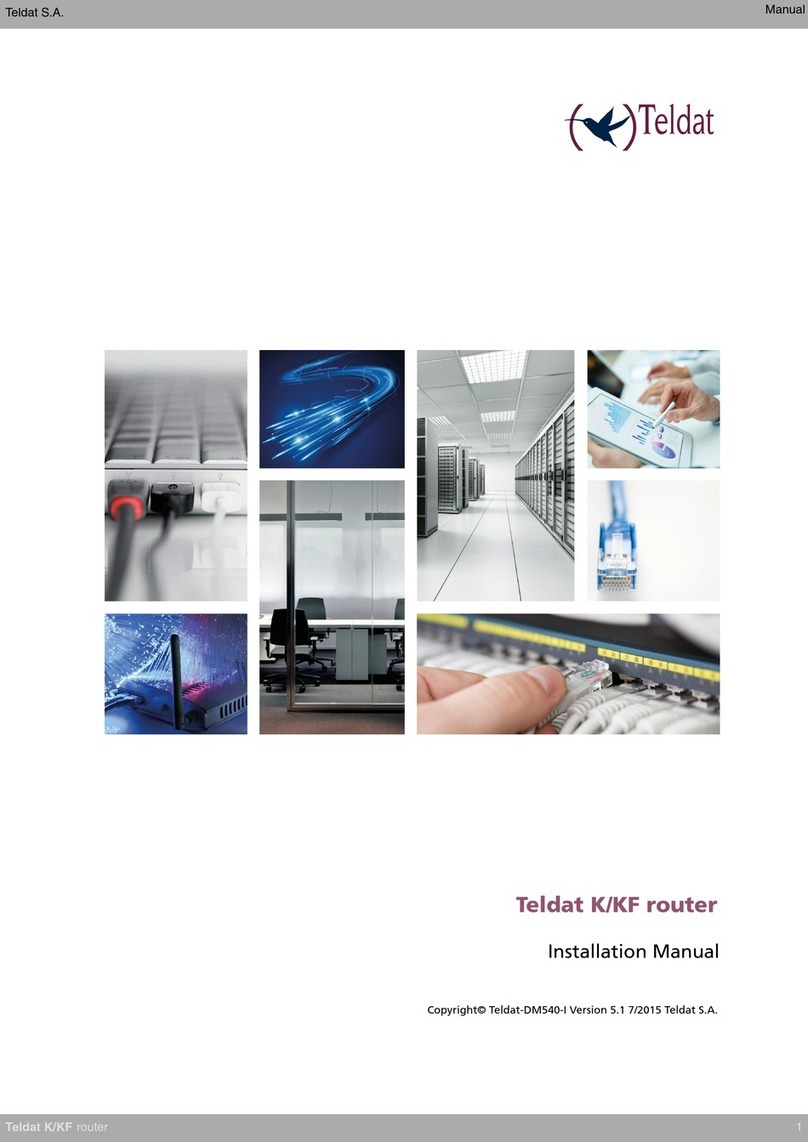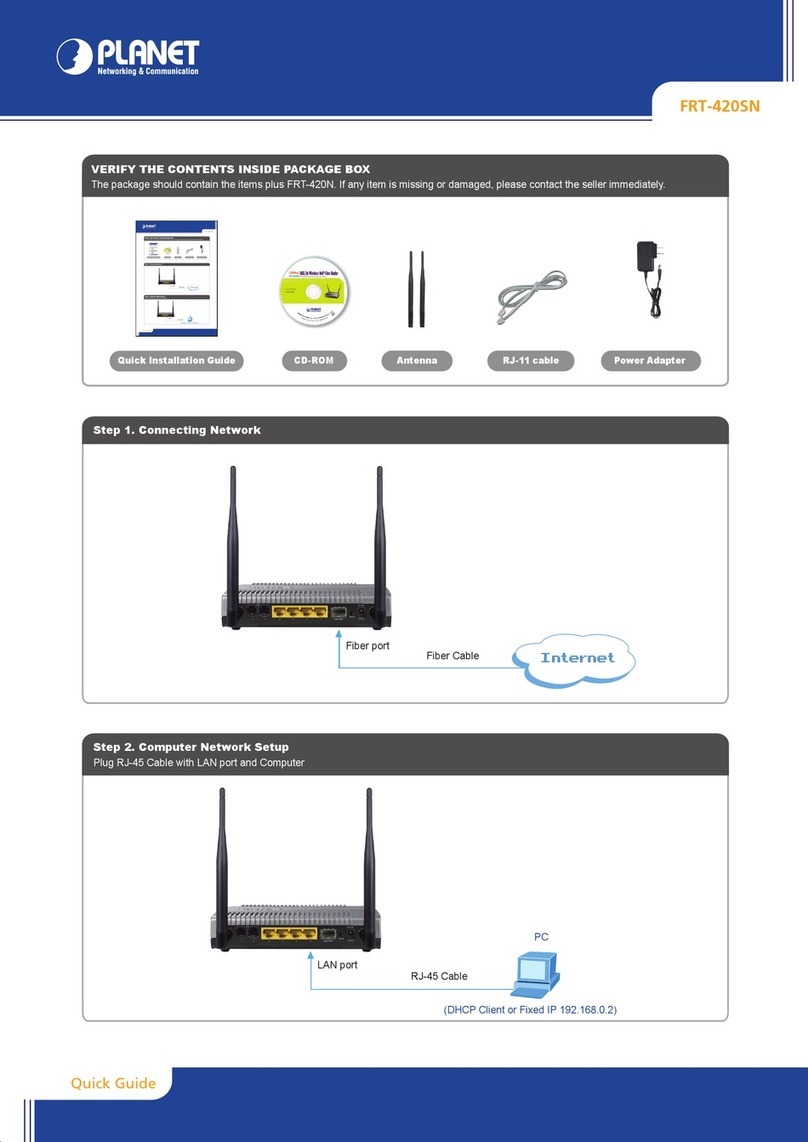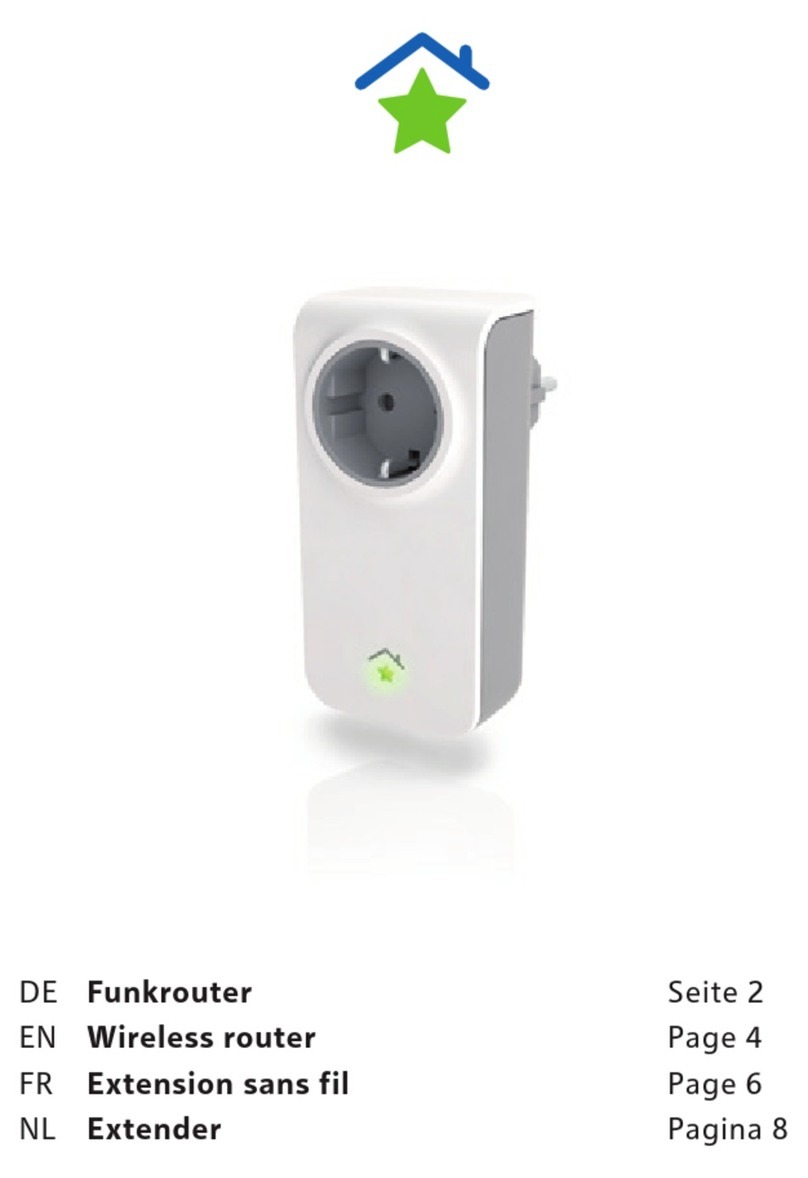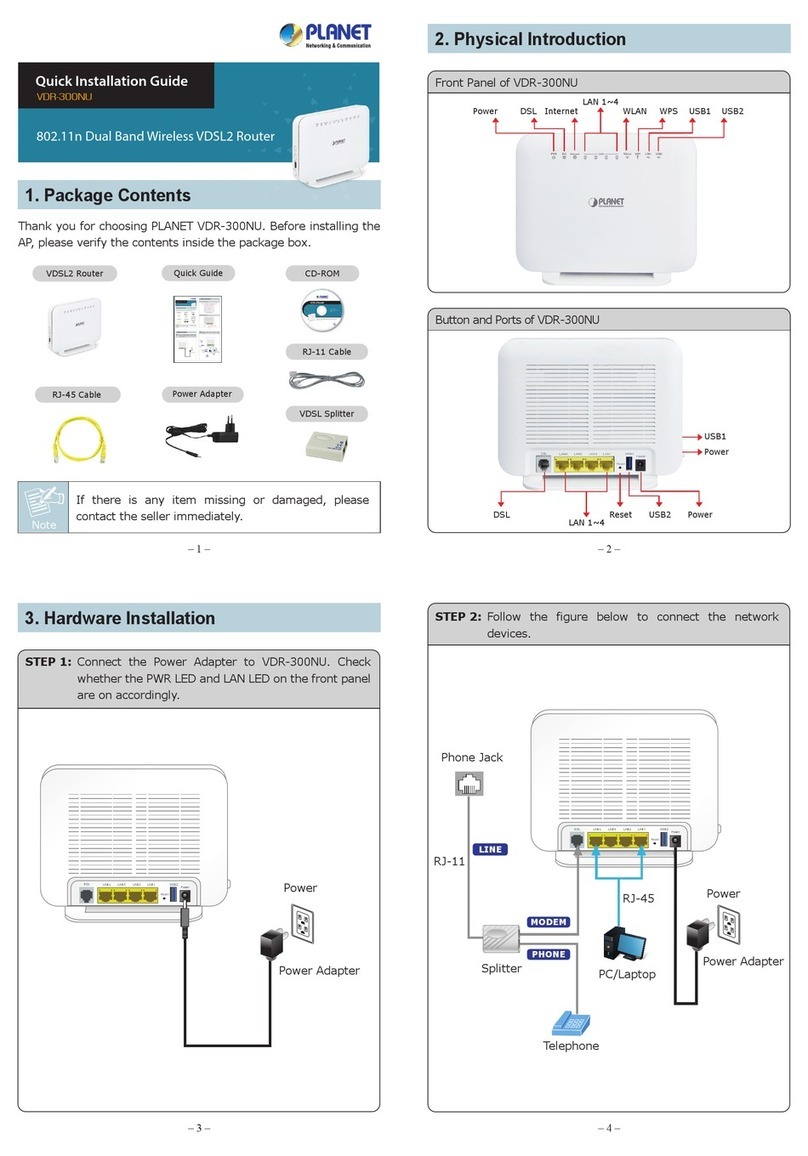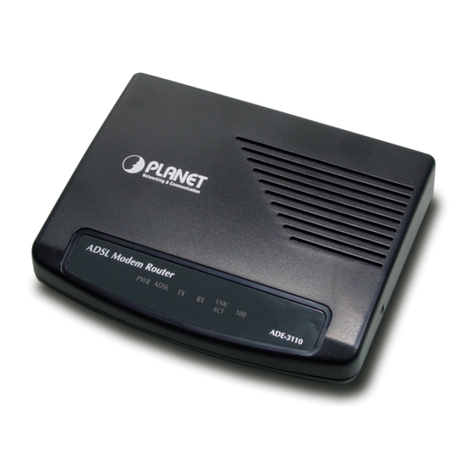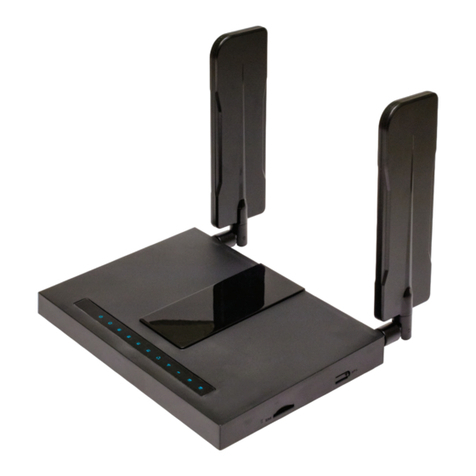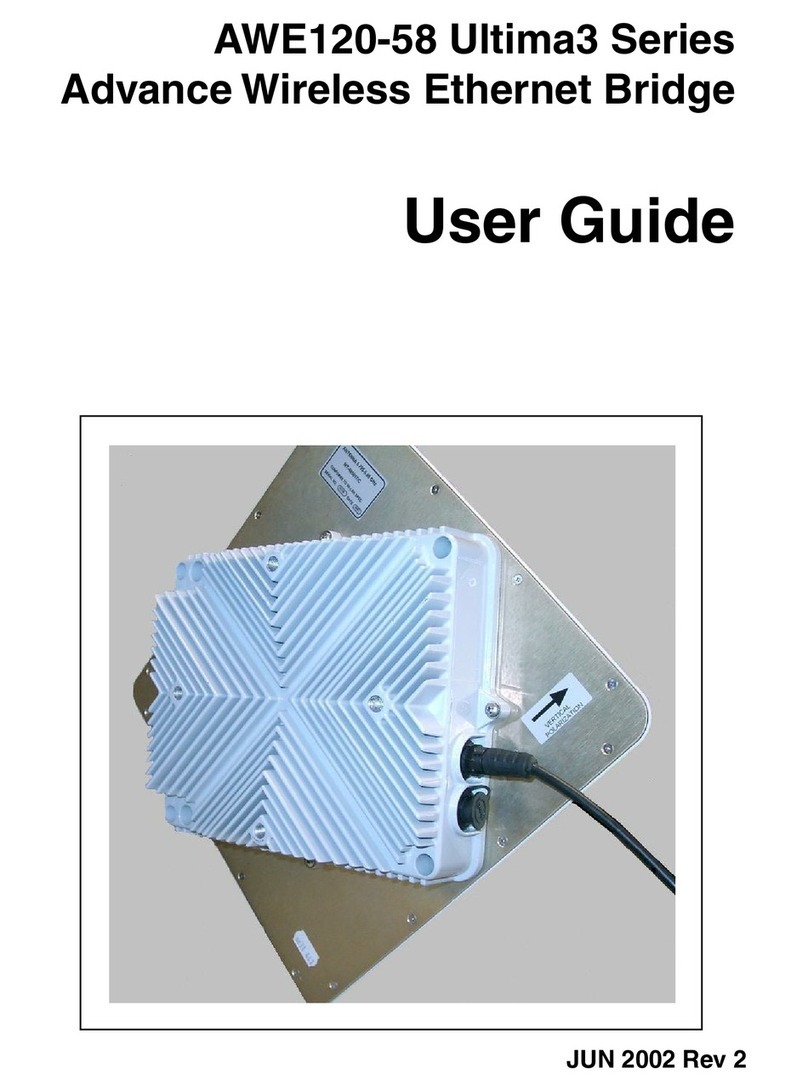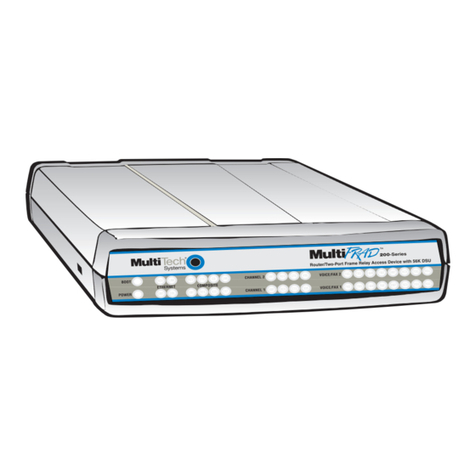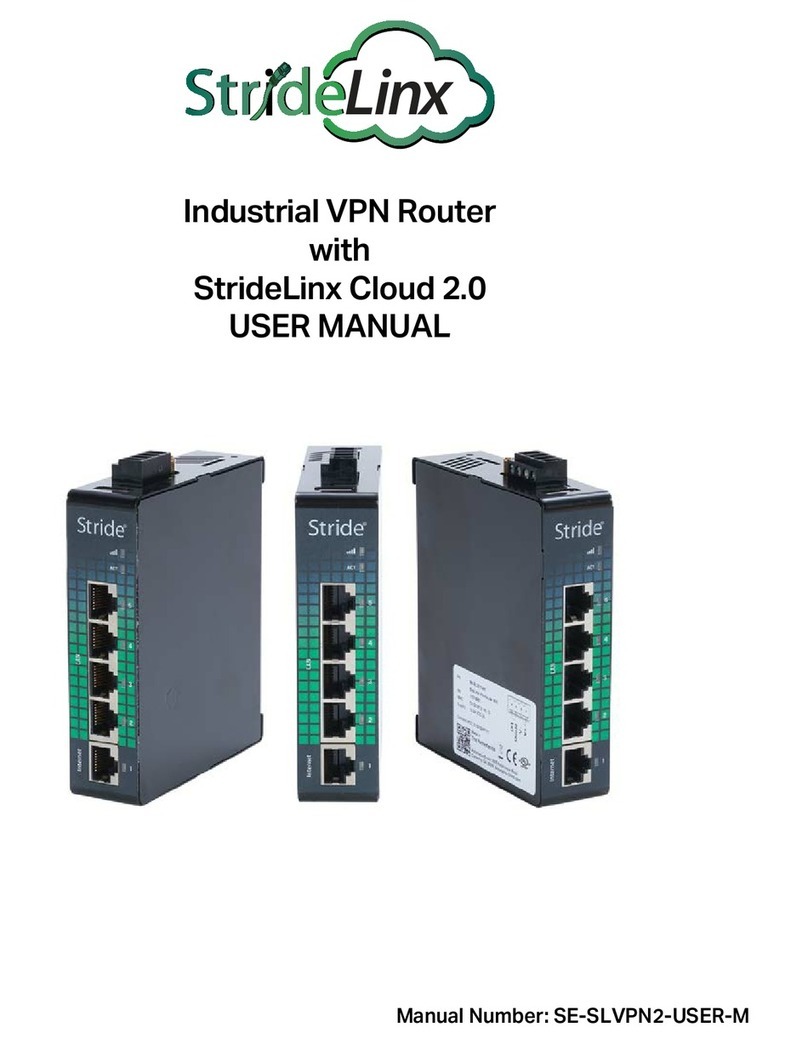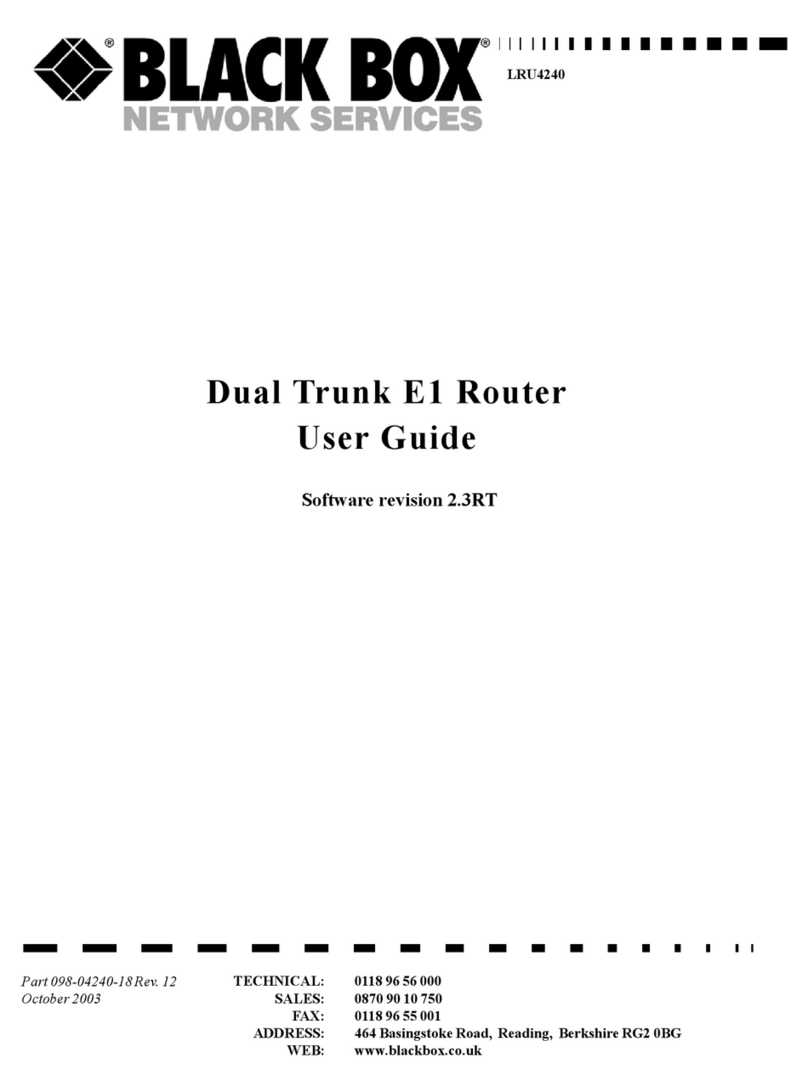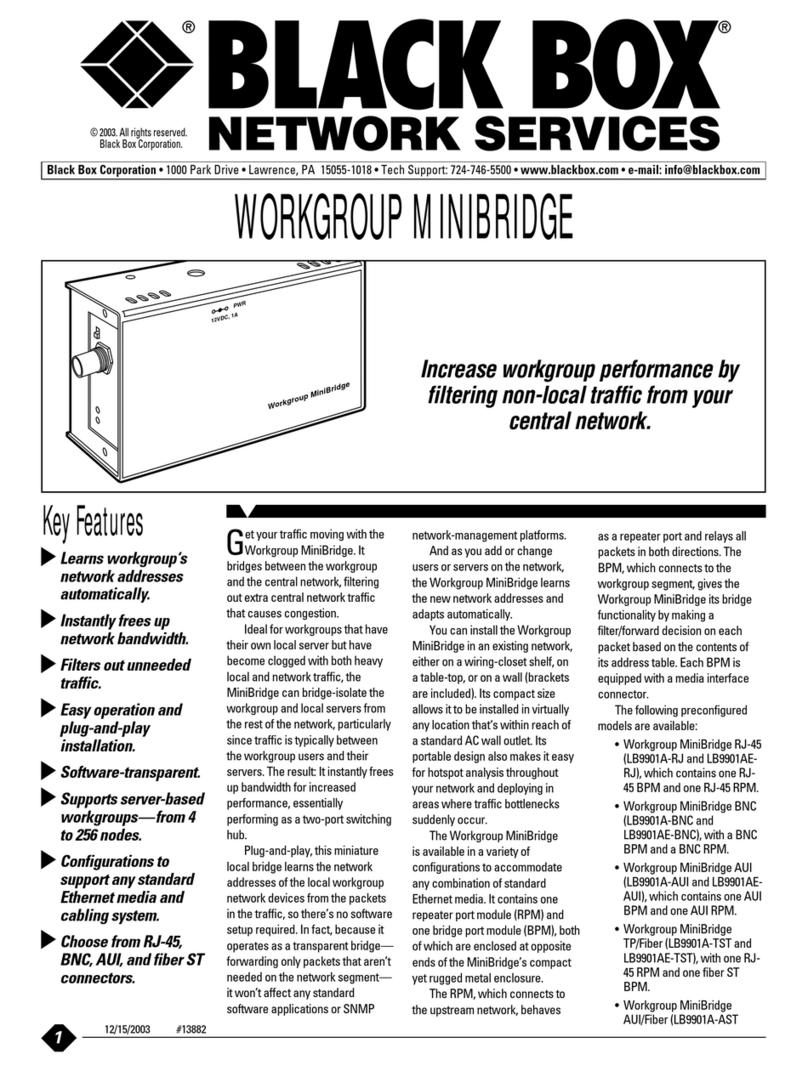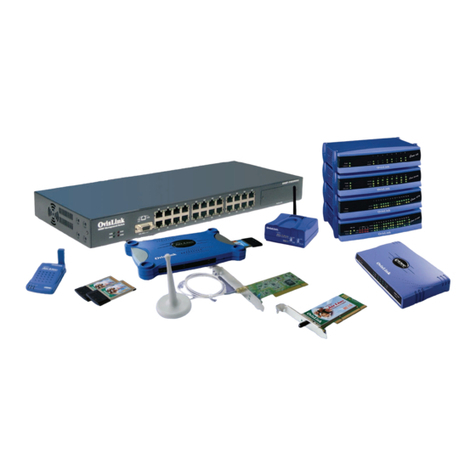
Fig. 10: Wireless WAN antenna connectors
If the Main and Diversity antennas are not directly connected to the device, but installed through extension cables,
the minimum distance between them must be 7cm and the maximum recommendable distance is 25 cm.
To achieve optimum performance from the installed radio frequency accessories (antennas and cables), these
should be the ones recommended by Teldat.
Teldat has a series of accessories (angled antennas, antennas for external use, ceiling antennas, extension cables,
etc.), which allow you to install the Teldat C1+LS in different locations.
Placing the antenna
The orientation of the antenna and its location with respect to other wireless devices and radiation devices (such as
communication devices, personal computers, etc.) can significantly influence the device performance.
The antennas transmit and receive radio signals. Performance is also affected by environmental factors such as the
distance between the device and the base station, physical obstacles and other interferences due to radio frequen-
cies (RF).
In order to achieve the best coverage, carry out the following instructions:
• Whenever possible, place the antenna where there are no physical obstacles. Obstacles between the Teldat-3Ge
and the base station degrade the RF signal. Place the device above ground level and ensure that it is suitably ori-
entated towards the nearest base station.
• Density of materials also affects the antennas. Place them away from any type of wall, metal screens, mirrors, etc.
• Do not place the antenna near columns that can produce shadow areas and reduce the coverage zone.
• Keep the antenna away from metal pipes such as canals, air-conditioning.
• Please bear in mind that other wireless devices such as telephones, microwaves, etc., can temporarily interfere
with the quality of the radio signal.
• We do not recommend that you install the antenna near or by racks containing communication devices, computers,
etc. Use an extension cable and place the antenna outside.
The following recommendations are applicable to all wireless devices:
• Do not touch or move the antenna while the device is transmitting or receiving.
• When the antenna is transmitting, do not touch any equipment that contains devices that radiate very close to, or
touching, any exposed part of the body (particularly the face and eyes).
• Do not install the device in areas where the atmosphere is potentially explosive.
• Wireless devices can cause interferences with other devices. Do not use the device in areas where medical equip-
ment is installed.
• In order to ensure that you are complying with the R&TTE 1999/5/EC norm, the device must be at least 15 cm
away from a human body when it is operating.
1.2.3 Configuration Connection
1.2.3.1 Configuration using a local console (CONF connector)
The Teldat C1+LS router has a female RJ45 connector on the rear panel labeled as “Conf.”, which provides access
to the device’s local console. For configuration, you must connect the “Conf.” port to an asynchronous terminal (or to
a PC with terminal emulation).
Teldat S.A. 1 Installing the Router
Teldat C1+LS Router 7




















